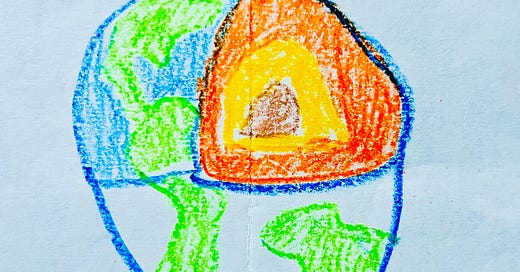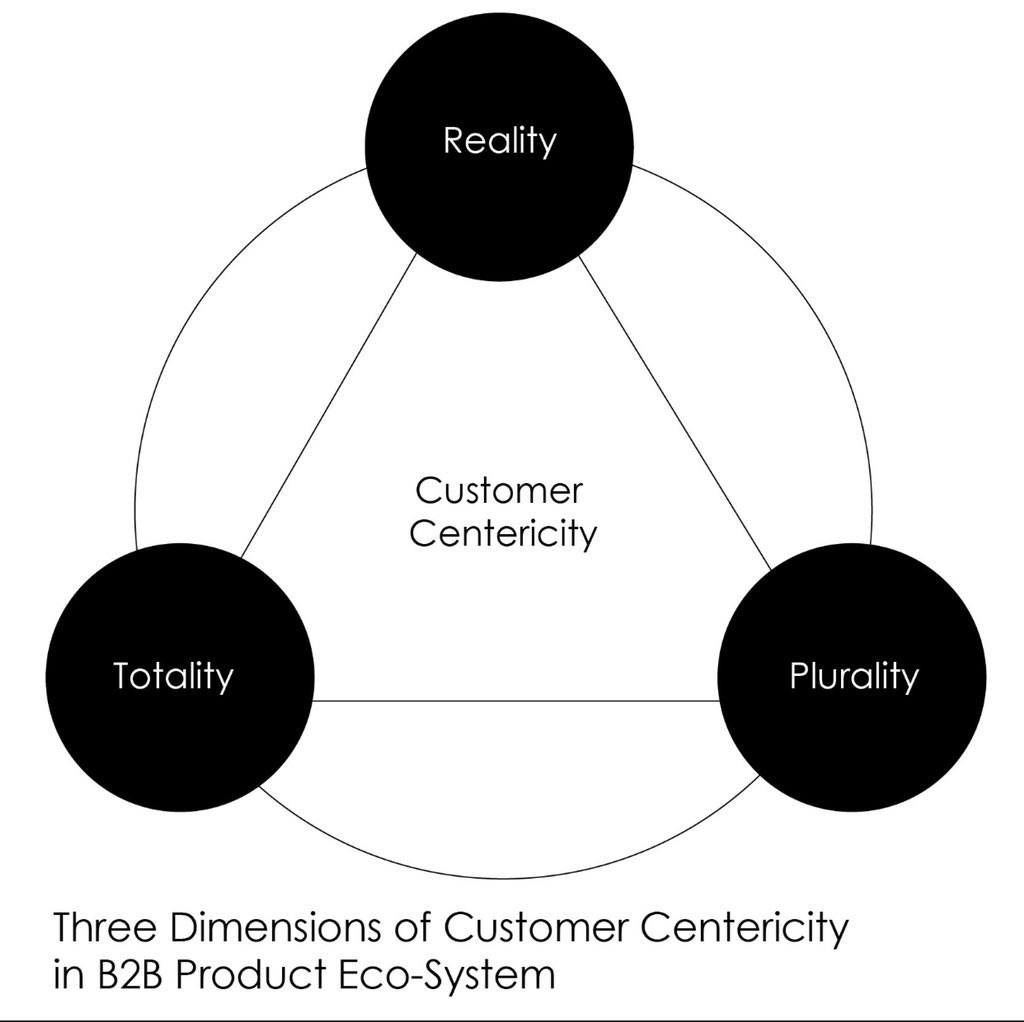One of the things I love about writing and learning in public is the serendipity of collaboration; people who come across my musings will sometimes reach out and offer to partner and iterate on an idea that resonated with them. This happened recently with Shanaya from Product Thumb, who heard my audio post on The Layers of Customer Centricity and created a set of accompanying visualizations. You can find her diagrams and my expanded thoughts below…
To me, the key to building a great product is customer centricity. Although being customer centric isn’t a guarantee of success, no compelling product ever found fit without understanding its target user. In fact, if you were to scope things to B2B products, you can get even more specific about what’s required.
reality (an actual, named user with access to budget)
totality (deep knowledge of the end user’s environment)
plurality (conviction on a repeatable problem vs one off)
I purposely named the first level reality - you can’t move to the subsequent stages without getting through this gate. Too many B2B products are conceived outside reality - the persona is theoretical, the pain is manageable, and the budget is non-existent. Can you manufacture a product that way? Sure. But can you build a business around that product? No.
The best way I’ve found to gauge reality is blending qual and quant research. Rather than starting with a 10k ft view of the market, begin with a 1 ft view of a user struggling to do a job.
If you’ve narrowed down your idea to solving a problem for a specific user, you should also have an understanding of the other tools and processes that user interacts with. The importance of totality is making sure your product fits within the user’s larger workflow. Just because you see an opportunity to alleviate user pain doesn’t mean every other product they use also doesn’t see that possibility - it’s just as like an existing tool expands its capability set vs the user adopting a new tool (i.e. yours).
If you’ve fully wrapped your head around the totality of the end-user experience, you can make smarter decisions about the entry point of your product (new interface vs plugging into existing ecosystem).
I mentioned earlier that you want to start with a 1 ft view of the user, but in order to build a business around your product you have to confirm that there is a repeatable playbook - that’s where plurality comes. You have to take that 1 ft view of the user and tie it back to a 10k ft view of the broader market. While reality and totality are about product market fit, plurality is about GTM motion fit.
Products that pass the first two tests but not this last one tend to be the center of ad-hoc services businesses - think of an agency that does custom development work vs a salesforce selling the same solution to the same problem to the same buyer across different channels / geographies / segments.
Hopefully these visuals make these ideas more concrete - feel free to share!
https://twitter.com/ibscribe/status/1665042394797207555
As always, I’d also love to hear from readers about their attempts at customer centricity - please chime in via comments👇 or join the chat via the Substack app.
And if you enjoyed this post, please consider subscribing.
further reading / references
you can hear a 5 minute audio recap of these concepts here
CX loops are a good way to train your organization to be more customer centric
my time at Amazon really informed my customer obsession mindset, and you can read more about how they do things in my posts on Bar Raiser and Customer Zero
if you enjoyed this framework (which is really about gauging the potential for product market fit) you should check out my thoughts on Product Market Flex
If the idea of “blending qual and quant” intrigues you, take a look at Data vs Intuition
Skip Step SaaS is a mental model for reverse engineering the original insight of many B2B products to make life easier for a clear user persona / problem
the idea that your product has to fit into the user’s workflow is elaborated on in my Span (vs Split Personas) article
childish drawing / interpretation








